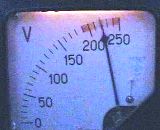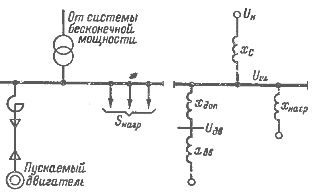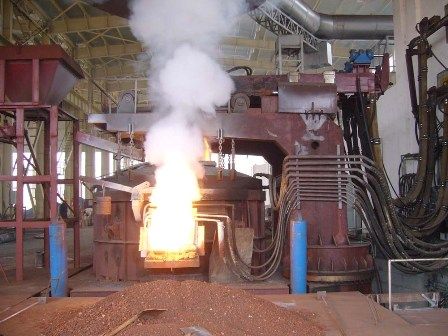Voltage fluctuations of electrical receivers
 Voltage fluctuations — these are rapid changes in voltage, which in modern electrical systems can be caused by a sufficiently powerful load, characterized by a pulsed, sharply changing nature of active and reactive power consumption.
Voltage fluctuations — these are rapid changes in voltage, which in modern electrical systems can be caused by a sufficiently powerful load, characterized by a pulsed, sharply changing nature of active and reactive power consumption.
When designing power supply systems for power electrical equipment, it is necessary to provide for measures that eliminate or reduce voltage fluctuations to the above values, caused by sharply changing loads of large motors, powerful electric furnaces, rectifiers, etc.
Of these events, it should be noted:
-
convergence of energy users with sharply changing loads to powerful energy sources,
-
reducing the reactivity of the supply network,
-
distribution to individual lines or transformers of energy consumers with a sharply changing load,
-
connecting shock and silent loads to different branches of split winding transformers,
-
applying longitudinal compensation.
Voltage fluctuations in 6-10 kV networks from sudden changes in load can be roughly determined by an approximate formula,%

where ΔI is the peak current in the 6-10 kV network, Ik is the short-circuit current in this section of the 6-10 kV network (taking into account the additional power supply from synchronous motors).
When synchronous motors with a rapidly changing load are powered by a sufficiently powerful system (if the power of all power sources in the system is 10 or more times higher than the starting overvoltage of the largest motor), voltage fluctuations at the connection point of the engines can be roughly determined by the formula

where SK is the short-circuit power at the point where δVt is determined, MBA, ΔQ is the change in the reactive load (with a positive sign — with an increase in the consumed power and with a decrease in the output power), Mvar.

Rice. 1. Electric circuit of the starter motor.
The residual voltage during asynchronous starting (or self-starting) of motors (Fig. 1) is recommended to be determined by the following formulas derived for the calculation (motor power Sd is taken as basic), resp. units:


where Vd is the motor terminal voltage drop fraction of rated, Vsh is the bus voltage drop, Ki is the rated frequency of the motor starting current,


xload, resp.

xc is the short-circuit resistance to the busbars of the power substation, resp.units, SK is the power of a three-phase short circuit on the busbars of the power substation at a voltage of UnkVA, Sload is the strong load connected to the busbars of the power substation, kVA, φ load is the phase shift angle of the other load, xdop is the additional resistance, connected between the busbars of the power substation and the engine (reactor, cable, etc.), resp. units, xpr is a conditional calculated value that has no physical meaning.

In the absence of additional resistance, the voltage drop will be part of the nominal:
Electric arc furnace
Voltage fluctuations caused by the operation of an Electric Arc Furnace (EAF) shall not exceed the above standard values, subject to the following conditions:
for a single chipboard

for chipboard group

where ST is the rated power of the arc furnace transformer, Sk is the power of the three-phase short circuit at the point for which the possibility of connecting the furnace transformer is checked, Kn is the coefficient of increase in voltage fluctuations during operation of a group of n furnaces:
• for chipboard with the same power,

• for chipboard with different strength,

STmax is the capacity of the largest furnace transformer in a furnace group.
For networks in which these conditions are not met, special calculations of voltage fluctuations must be made in order to take measures to reduce them.


